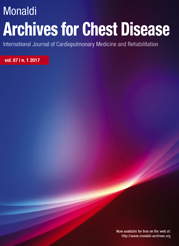Impact of antifibrotics on post-COVID-19 lung sequelae
All claims expressed in this article are solely those of the authors and do not necessarily represent those of their affiliated organizations, or those of the publisher, the editors and the reviewers. Any product that may be evaluated in this article or claim that may be made by its manufacturer is not guaranteed or endorsed by the publisher.
Accepted: 7 May 2025
Authors
Respiratory problems in acute COVID-19 and post-acute COVID-19 syndrome vary greatly, potentially leading to long-term functional difficulties. Off-label usage of antifibrotics, such as pirfenidone, has emerged as a promising treatment for post-COVID interstitial lung problems. Our study aims to assess clinical and radiological lung abnormalities post-COVID-19 and the effect of antifibrotics on the outcome. A retrospective observational study examined data from 90 COVID-19 patients who completed the follow-up period in the post-COVID clinic at the Chest Department, Kasr El Ainy Hospital, from August 2020 to August 2022. Demographic data, comorbidities, exercise tolerance, and chest computed tomography (CT) results were collected 1 and 6 months after the diagnosis. Initial CT scans (1 month following hospital admission) revealed diffuse ground-glass opacities (87.8%) and reticulations (43.3%). After 6 months, 33.3% were back to normal, 41% had persistent reticulations, 22.2% had ground glass opacities, and 3.3% had bronchiectasis. CT scores improved dramatically after 6 months. No significant link was detected between CT score change and off-label use of pirfenidone. Antifibrotic therapy has a modest effect on post-COVID lung problems. One-third of patients showed reticulations as persistent radiological abnormalities, which could guide future treatment choices.
Ethics Approval
Ethical committee approval was obtained from the research ethics committee of Cairo University, with IRB number MD-5-2022.How to Cite

This work is licensed under a Creative Commons Attribution-NonCommercial 4.0 International License.






